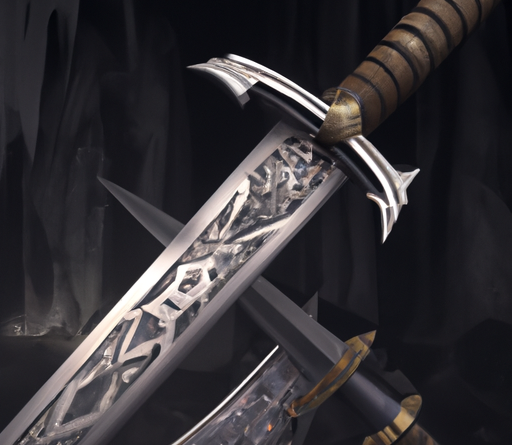Imagine stepping into the gruesome world of one of the most iconic horror movies of all time. “The Texas Chain Saw Massacre Review” takes you on a terrifying journey through this cult classic film. From the chilling storyline to the unforgettable characters, this review immerses you in the bone-chilling atmosphere of the Texas countryside. Join us as we dissect the film, explore its impact on the horror genre, and unravel the mysteries behind Leatherface’s gruesome reign of terror. Grab your popcorn and prepare for a nail-biting review like no other.
The Texas Chain Saw Massacre Review
Welcome to our friendly review of “The Texas Chain Saw Massacre”! In this article, we will provide a comprehensive overview of the movie, including the plot summary, analysis of the characters, evaluations of the acting performances, discussion of cinematography and production design, exploration of the sound and music, examination of the themes and symbolism, analysis of its impact and legacy, critical reception, as well as controversies surrounding the film.
Overview of the movie
“The Texas Chain Saw Massacre” is a horror film that was released in 1974. Directed by Tobe Hooper, it falls under the genre of horror, slasher, and thriller. The movie was produced on a relatively low budget of around $300,000 but went on to achieve box office success, grossing over $30 million worldwide.
Plot summary
The movie begins with a group of friends, including Sally Hardesty and her disabled brother Franklin, traveling to visit the grave of their grandfather. Along the way, they encounter a hitchhiker who introduces them to the tale of a local family of deranged cannibals. Unbeknownst to them, they are about to become victims themselves.
As the group continues their journey, they stumble upon a seemingly abandoned farmhouse. Curiosity gets the better of them, and they decide to investigate. Little do they know that this decision will lead them into a nightmare.
Upon entering the house, they encounter a chainsaw-wielding maniac known as Leatherface, a member of the psychotic Sawyer family. Panic ensues as they desperately try to escape the clutches of Leatherface and his sadistic family.
Characters
“The Texas Chain Saw Massacre” features a variety of characters, each adding depth and tension to the story.
- Sally Hardesty: The main protagonist and final girl of the film. Sally is resourceful and determined, doing whatever it takes to survive.
- Franklin Hardesty: Sally’s wheelchair-bound brother. Franklin provides a sense of vulnerability and introduces a unique dynamic to the group.
- Jerry, Kirk, and Pam: Sally’s friends who are also victims of Leatherface and the Sawyer family. Each character brings their own personality and presence to the film.
- Leatherface and the Sawyer family: Leatherface, played by Gunnar Hansen, is a hulking and grotesque serial killer. The Sawyer family, consisting of Leatherface’s deranged relatives, further heightens the horror and chaos.
- Other minor characters: The hitchhiker, the gas station attendant, and the old man are minor characters who play crucial roles in the unfolding events.
Acting performances
The performances in “The Texas Chain Saw Massacre” are captivating and truly bring the characters to life.
Marilyn Burns delivers a standout performance as Sally Hardesty. Her portrayal of a terrified and determined survivor resonates with the audience, making her a memorable final girl. Paul A. Partain effectively captures the frustration and vulnerability of Franklin Hardesty, creating a character that elicits both sympathy and fear.
The supporting cast, including Allen Danziger, William Vail, and Teri McMinn, also deliver solid performances, showcasing the authenticity and believability of their characters. Gunnar Hansen’s portrayal of Leatherface is particularly chilling, capturing the terror and brutality of the iconic killer.
Overall, the acting performances in “The Texas Chain Saw Massacre” contribute significantly to the film’s terrifying atmosphere and emotional impact.
Cinematography and production design
The cinematography and production design of “The Texas Chain Saw Massacre” play a crucial role in creating a haunting and visceral experience for the audience.
The film’s visual aesthetics are raw and gritty, capturing the grim reality of the characters’ predicament. The use of handheld cameras and a documentary-style approach adds a sense of authenticity and immediacy to the storytelling.
Lighting and color are employed to enhance the atmosphere of dread and suspense. The scenes inside the Sawyer family’s house are bathed in eerie darkness, while the daylight shots in the open Texas landscape intensify the characters’ vulnerability.
The set design and locations contribute to the film’s unsettling ambiance. The desolate farmhouse, with its decaying interiors and unsettling clutter, has become an iconic location in horror cinema. Attention to detail in creating a believable and immersive world further enhances the film’s impact.
Sound and music
The sound and music in “The Texas Chain Saw Massacre” are instrumental in creating a sense of unease and terror.
The sound effects and atmospheric noises, such as the revving of the chainsaw and the screams of the victims, are used to amplify the horror and brutality of the film. These elements immerse the audience in the terrifying world of Leatherface and his family.
The musical score and soundtrack, composed by Wayne Bell and Tobe Hooper, effectively heighten the tension and suspense throughout the movie. The haunting soundscape adds an additional layer of fear, enhancing the viewing experience for the audience.
Themes and symbolism
“The Texas Chain Saw Massacre” explores various themes and symbolism, adding depth and complexity to the story.
Fear and vulnerability are central themes, as the characters find themselves trapped and hunted by Leatherface and his family. The movie also touches upon the threat of rural America, highlighting the isolation and dangers that can exist in seemingly peaceful locations.
Dehumanization and madness are prevalent themes, as Leatherface and his family represent the horrors of devolving into a state of primal brutality. The film also incorporates elements of gender roles and feminism, with Sally Hardesty emerging as a strong and resourceful female protagonist.
Religious and cultural references can be found throughout the movie, adding another layer of subtext to the story. Additionally, the chainsaw itself serves as a powerful symbol, representing violence and the breakdown of societal norms.
Impact and legacy
“The Texas Chain Saw Massacre” has had a significant cultural impact and has become a landmark film in the horror genre.
The movie’s release in 1974 marked the beginning of a new era in horror cinema, introducing audiences to a level of brutality and realism previously unseen. Its success paved the way for the slasher genre, influencing future films like “Halloween” and “Friday the 13th.”
“The Texas Chain Saw Massacre” has spawned multiple sequels, remakes, and spin-offs, demonstrating its enduring popularity and the lasting impression it has made on audiences. Its fervent fan base continues to discuss and analyze its themes and characters, solidifying its place in the pantheon of horror cinema.
Critical analysis
“The Texas Chain Saw Massacre” has received both critical acclaim and retrospective analysis for its impact on the horror genre.
Upon its release, the film faced controversy due to its graphic violence and disturbing content. However, it was also praised for its ability to elicit genuine terror and its exploration of psychological horror.
Over the years, critics and scholars have analyzed and dissected the film’s themes, symbolism, and storytelling techniques. It is now regarded as a landmark in horror cinema, with its raw and visceral approach continuing to disturb and engage audiences to this day.
Controversies and reception
“The Texas Chain Saw Massacre” generated significant controversies and mixed reception upon its release.
Censorship and rating issues plagued the film, with some countries banning or heavily censoring it due to its violent content. However, these controversies only fueled the curiosity and intrigue surrounding the movie, contributing to its cult following.
Despite the initial mixed reception, “The Texas Chain Saw Massacre” has since been recognized as a classic of the horror genre. Retrospective reviews have praised its artistic merits, its impact on the genre, and the lasting terror it instills in viewers.
In conclusion, “The Texas Chain Saw Massacre” remains a boundary-pushing horror film that continues to captivate and terrify audiences. With its iconic characters, visceral storytelling, and thought-provoking themes, it has secured its place as a landmark in the horror genre. Whether you’re a horror aficionado or a casual viewer, this film is sure to leave an indelible mark on your psyche.






